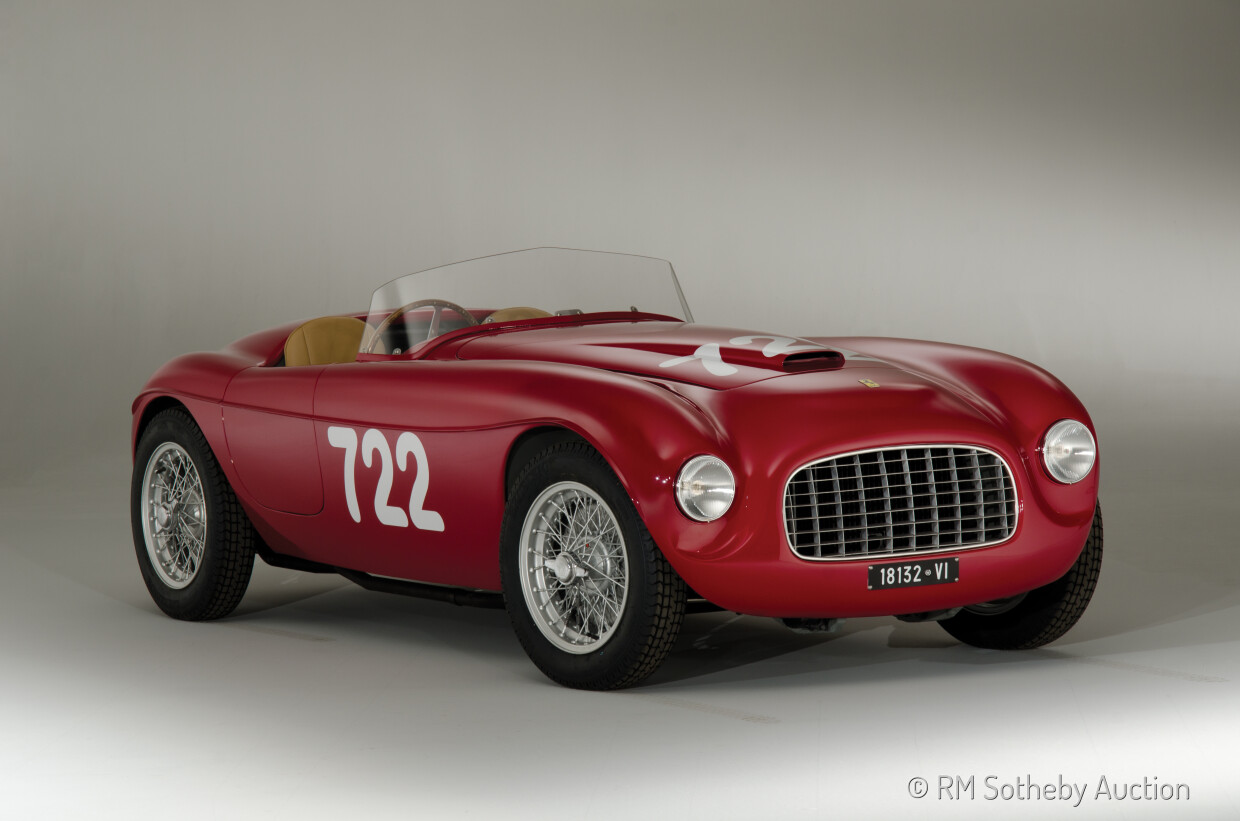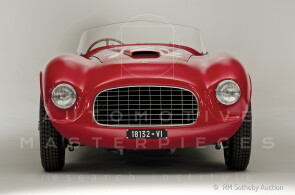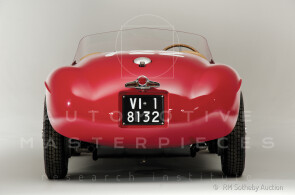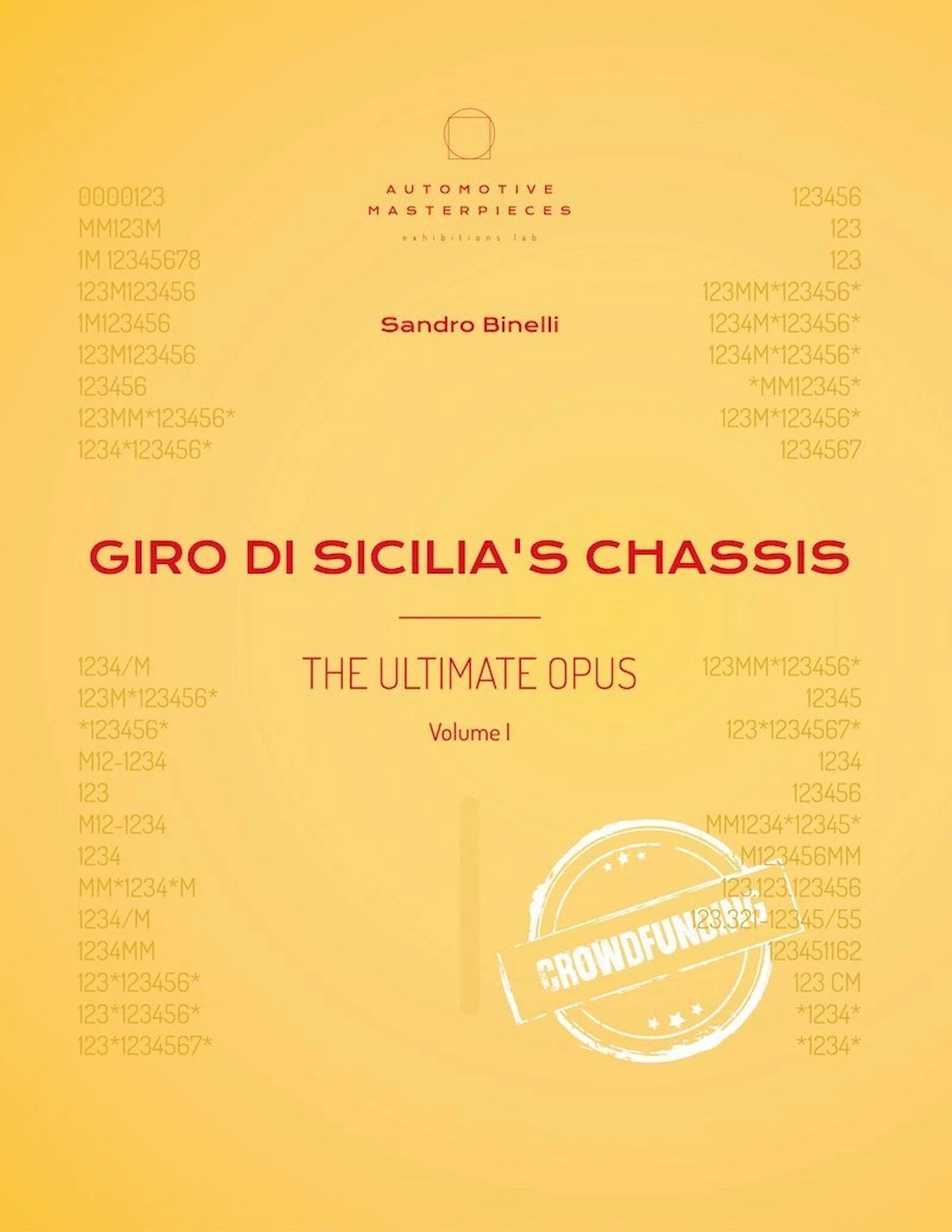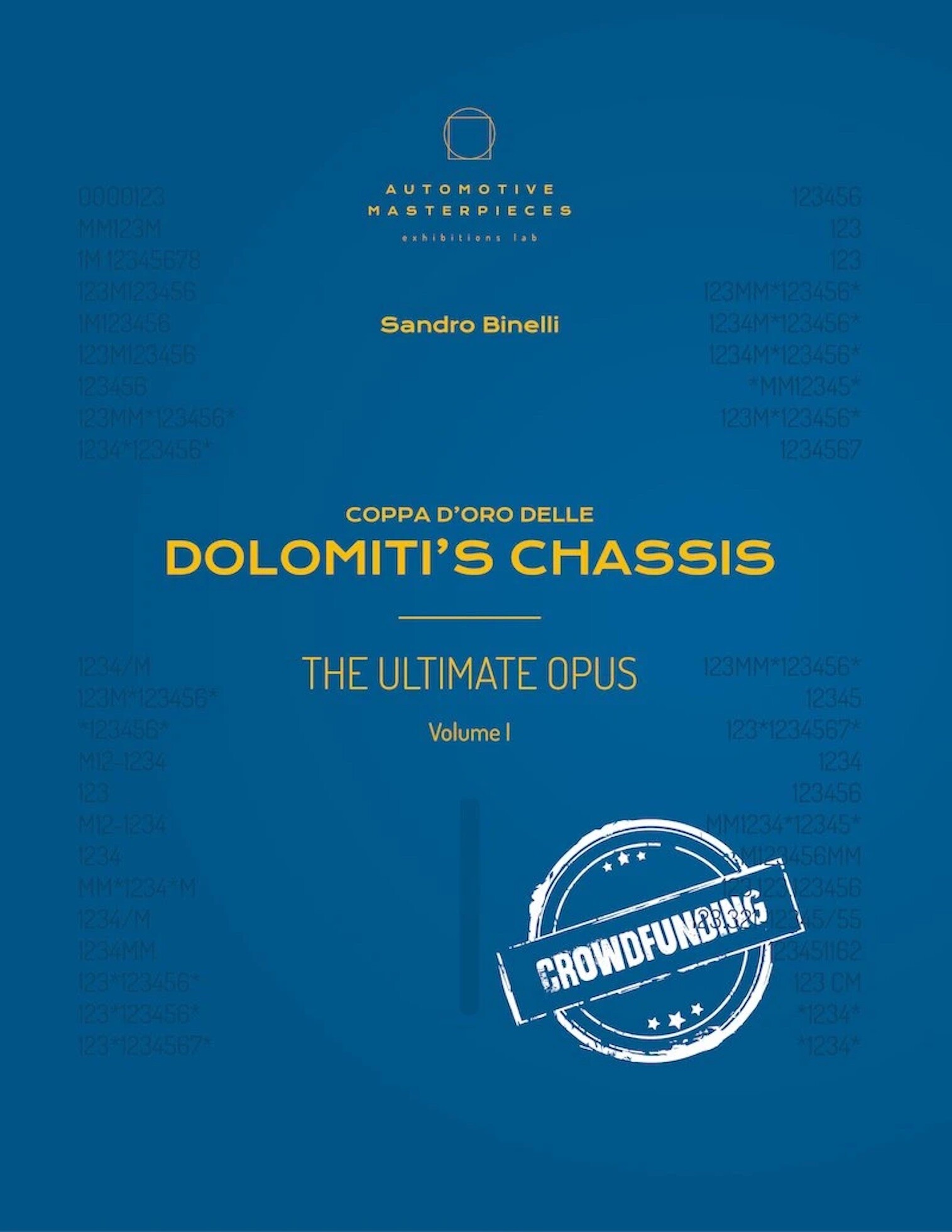
1948 Ferrari 166 Spider Corsa
ON/OFF
Why am I an Automotive Masterpiece?
1948 is considered the first true racing season for Ferrari, marked by the debut of the 2-liter version of the 12-cylinder engine, destined for a new model to be used both in the sports category and in Formula Two. It was the beginning of a successful and long-lasting series of cars, the "Tipo 166", which ensured Ferrari's prestige thanks to the first significant international successes. Designed to compete in the 2-liter class, it was an evolution of the 159 S, which in turn was a direct evolution of the first 125, and it debuted as a winner, achieving major successes that year. The 166’s chassis and suspensions had minor changes compared to previous models; it was a dedicated tubular structure designed by Ferrari and produced by Gilco. The car’s engine was the well-tested V12 designed by Gioacchino Colombo, brought to 1995.02 cc to reach the limit of the 2-liter class. Thanks to its 140 hp, it was favored by many gentlemen drivers of the time, while its flexibility and robustness allowed the 166 to be used competitively in any kind of race. As per Ferrari’s use, the car’s name corresponded to the displacement of the single cylinders. In 1953, the 166's built for competition were upgraded with a 9.5:1 compression ratio, individual intakes with three Weber 32 IF/4C carburetors, a new gearbox with synchronized 3rd and 4th gears, and twin fuel pumps. This allowed the 166/53 to produce 160 hp and to stay competitive in the 2-liter class. However, despite these improvements, the successes were limited due to the more competitive Maseratis.
The 166 engine, directly derived from the 159, was initially mounted on a racing-oriented spider model named "Corsa" (aka SC); it was mainly dressed with torpedo body and motorcycle-type fenders, or with an enclosed body depending on the track. Built in about ten examples, it was used interchangeably in Formula Two (2 liters) and in the sports category with only a few modifications. The racing life of the 166 SC was quite long; it was indeed used throughout the 1948 season and a good part of 1949, in both long and short wheelbase versions, with different types of grilles. The Sport Corsa is remembered for Nuvolari's feat at the 1948 Mille Miglia: already ill, he made a prodigious recovery, being first in Bologna, the last checkpoint before Brescia, with a lead of 29 minutes over Clemente Biondetti. Only an unfortunate spring failure stopped his achievement. The 166 Spider Corsa was dedicated to the "Inter" model, named after the Besana brothers' scuderia, who often successfully fielded it in races. The Ferrari Spider Corsa paved the way for the successful 166 models’ series, the first being the 166 Sport, a “road-going” version of the 166 SC. The S models were less extreme than the SC, which used a mixture of gasoline, alcohol, and benzole instead of regular gasoline.
According to the chassis sequence, the 1948 Ferrari 166 Spider Corsa, with chassis no. 012I, was the sixth of the maybe ten racing-dedicated 166 Spider Corsa and its racing record is illustrious; its career was punctuated with numerous upgrades to its drivetrain and coachwork to remain competitive. Completed in May 1948, chassis no. 012I was first dressed in cycle-winged “siluro” body by Ansaloni. Its first destination was as a Works Car for Scuderia Ferrari. It seems that before starting the 1948 racing season, the car had its first engine transplant and that the original 012I matching engine was replaced with unit 022I, now in the Barchetta 0002M. The siluro shape had small separated motorcycle fenders and a grille with horizontal bars. In July, it participated in the Coppa delle Dolomiti, finishing 9th overall; in August, it gained its first podium, 2nd overall at the Grand Prix of Pescara; both races with Count Bruno Sterzi. Thereafter, in the car’s inaugural season, factory driver Giovanni Bracco brought further victories. In 1949, the body remained “siluro” style, but the fenders were more integrated into the central body, and the grille had a more Ferrari-like design with a squared pattern. Bracco became the first private (ex-factory) owner of 012I in early 1949 and competed in at least 12 different races that year, alternating victories and disappointments. 012I became known in the racing circus with the nickname “Il Chiodo di Bracco,” or just “Chiodo” (i.e., nail). Bracco usually had Umberto Maglioli as a co-driver on several occasions, such as in the Giro di Sicilia, followed by the Mille Miglia where they had misfortune. But the mastery of Bracco with Chiodo on the hill climb earned him the title of “Re della Montagna,” winning the 1949 Italian Hill Climb Championship. At the conclusion of the 1949 season, Count Vittorio Emanuele Marzotto acquired chassis no. 012I from Bracco: it was the first Ferrari of many that would become part of Scuderia Marzotto, established by the five stylishly daring brothers, sons of textile mogul Gaetano Marzotto. The car was re-registered by its second owner with Vicenza plates ‘VI 18132.’ The Marzotto brothers were famous for customizing their cars, and so they did with chassis no. 012I, commissioning a re-body in a Barchetta shape. Entrusted to Carrozzeria Fontana, the result was very close in appearance to the popular design of the Touring-bodied Ferrari 166 MM. The car survived in this variation through the present day. As soon as it was completed, Vittorio Emanuele Marzotto entered the car into main races. At the 1950 Mille Miglia, with the car’s designer Paolo Fontana as his co-driver, chassis no. 012I was entered as a “Type 195S Barchetta Fontana,” indicating what is presumed to be an engine upgrade to 2.3 liters. The result was a stunning 9th overall, 5th in Class. This event marks the beginning of the close but conflicting relationship between Enzo Ferrari and the Marzotto brothers. At the end of a successful 1950 season, the body was again modified by Fontana, adding a fastback hardtop, along with the requisite ‘Berlinetta’ fixed windscreen, outside door handles, and wipers; the car now liveried in a shade of silver. Fitted with a new 2.5 L engine, chassis no. 012I began the 1951 season, changing the engine again with a 2 L unit before the Giro Automobilistico delle Calabrie where, driven by the Mancini brothers, it ranked 3rd overall. Chassis no. 012I remained with Scuderia Marzotto until the team’s liquidation in 1953. The car was sold to Ferrari test driver Martino Severi, in a bundle with nine Ferraris, their transport truck, and a lot of parts. The last recorded competition entry for the car was the 1955 Targa Florio, in the hands of Roman racer Francesco Matrullo. Some sources report the shortening of the chassis, and it also seems that the car faced this racing event fitted with an Alfa Romeo 1900 engine. In 1970, chassis no. 012I resurfaced in a garage south of Rome, with the hardtop removed. Ferrari enthusiast Corrado Cupellini acquired the car, along with a 166 engine (116MS) from the 1950 Marzotto Formula 2 Ferrari and proceeded with a light overhaul. He then sold the car to Jacques Thuysbaert in 1972. Around 1975, the car was sent to Willy Felber’s Haute Performance SA in Morges, Switzerland, being later sold to Giuseppe Medici, who entrusted its first restoration to Autofficina Piero Mazzetti in 1976. One year later, chassis no. 012I was sold back to Willy Felber and transferred in 1978 to Jean Zanchi (CH). He campaigned it in historic events, driven by Pierre De Siebenthal, then decided it was time to restore the car properly. In the late 1990s, Bill Voss traveled from California to the garage of Beppe Castagno, outside Turin, to inspect this car: he purchased it mid-restoration. Some years later, with little progress made, the owner decided to bring the car to California, entrusting it with top experts. The plan was to use its remarkably intact 1950 Fontana body on the original chassis. The F2 engine was rebuilt by Ferrari technician Patrick Ottis of Berkeley, California. The chassis and body were sent to ‘preservationist-restorer’ Curtis Patience in Portland, Oregon, a world-class metalworker. His own odyssey restoring the car is documented in the 2011 issue of The Prancing Horse. Ultimately, the car was sent to the team at Phil Reilly & Co. of San Rafael, California for final testing completed in January 2012. The car is now fitted with the 024MB engine unit. Sold to Leslie Wexner, it has been sold and now part of a private collection since 2019. The Ferrari 166 SC with chassis no. 012I was featured in many themed books, such as Sandro Binelli’s Mille Miglia's Chassis - The Ultimate Opus Volume III.
